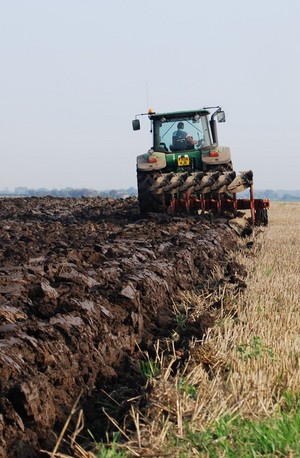It's the time of year when the success or otherwise of black-grass control in winter cereals is judged. Reports from farmers suggest that it is a mixed bag and there have been some spectacular failures of control.
This has been due to a combination of herbicide resistance and dry soil conditions when the herbicides were applied. These dry soil conditions not only reduced the control achieved by the pre- and early post-emergence herbicides but also the early autumn applications of products such as Atlantis.
The NIAB TAG Updates issued to our Network members expressed concern that this might happen and suggested that the application of Atlantis, or its alternatives, was delayed until the soil around the roots of the weed was moist. However, in many cases, the farmer’s desire to ‘get on’ proved too strong a temptation.
After the dry autumns of 2009 and 2011 it should be clear to all that there is a real issue about controlling black-grass in conditions that are hostile to good herbicide activity. Conditions for activity were not that important when the weed was more susceptible to herbicides but now they are critical. Just 'getting on’ and treating regardless of the conditions is not an option.
I suppose that the really nasty conditions for residual herbicides are those where there is sufficient moisture for crops and the weed to establish but the surface layer of the soil is too dry for good herbicide activity - exactly what occurred last autumn. During the most vulnerable weed stages to the pre- and early post-emergence herbicides, the soil surface layer was too dry.
The only real answer to this is to lower the background black-grass populations to a level where less is required of herbicides.
The implications of this are clear: increased levels of cultural control are required and everyone knows the options. Their adoption has to be discussed on a farm-by-farm basis.
What was surprising about last autumn, and previous dry autumns, is that there was still a benefit in terms of black-grass numbers in the crop from delayed drilling. This has not been closely researched but indicates yet again that black-grass seed does not have to emerge for it to be lost.
Those who claim great benefits from ‘stale seedbeds’ should note that there are other significant mechanisms that cause seed loss. It is not just about getting the weed to emerge.
However, experience shows that delayed autumn drilling is a chancy option unless strategically adopted. In dry autumns, delaying the last couple of days’ drilling until the five day forecast is confidently predicting a good rain is an option for the worst affected fields. Hopefully, these fields can then be sprayed when the soil surface is moist. A few farmers tried this approach last autumn and it seemed to work.
A cultural measure not often featured as an option is to kill the black-grass in the standing crop or to ensile it before it becomes viable. This is most attractive when there are discrete patches of high infestations of the weed. These patches are often comprised of the most resistant weeds in the field.
So, there are both short and long-term considerations when assessing black-grass populations over the next week or so. The short-term issue is the implication of patches of black-grass seeding this summer. The long-term one is whether there is a need to reduce background black-grass populations to a level which is appropriate to the levels of control that can now be achieved by herbicides.
We are not at the end-game for herbicide control but we are at the end-game for the attitude that we can achieve high levels of black-grass control every year and that we can treat the weed at a time convenient to us. The weed has been slowly taking charge for the last three decades and everyone needs to recognise this.

